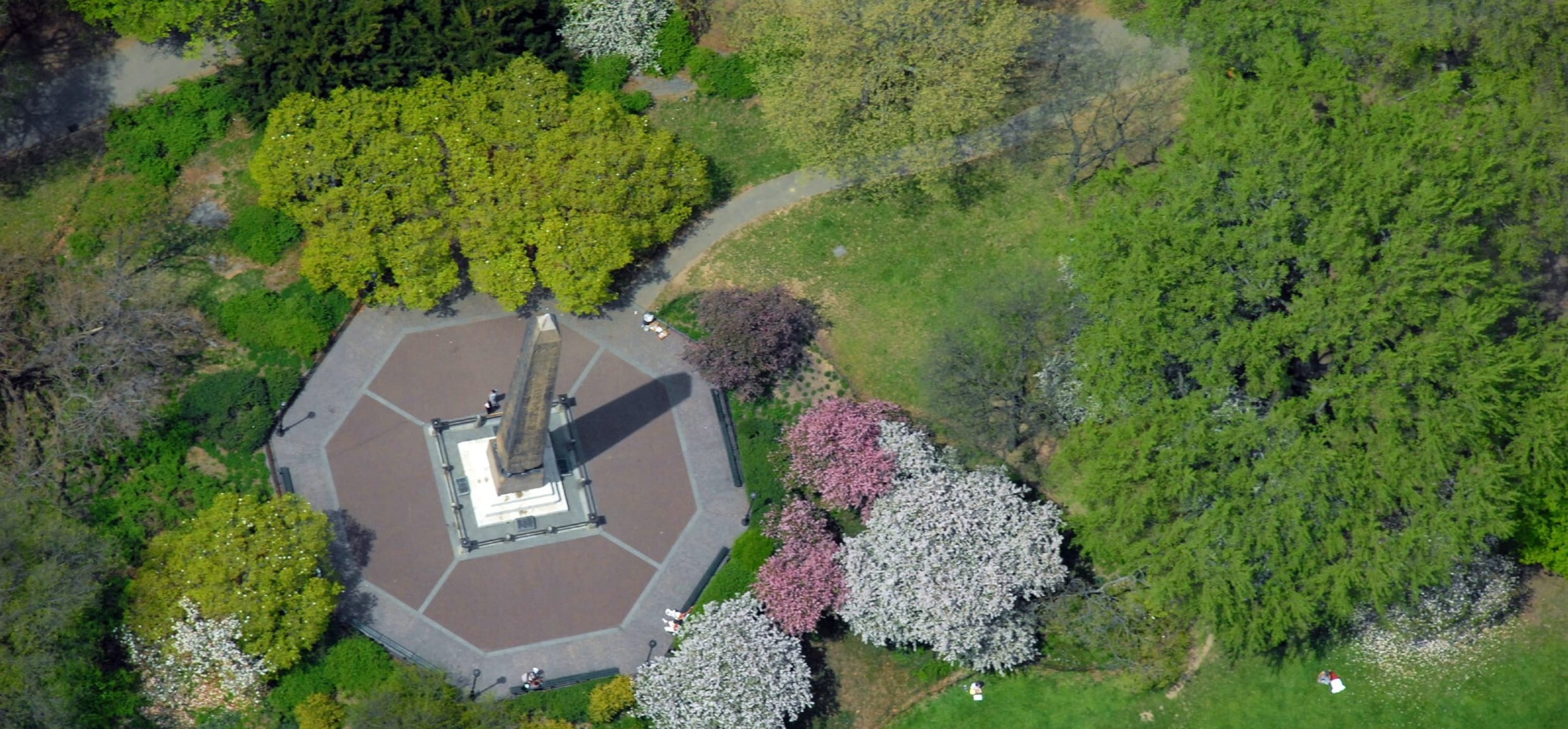Restoration
Obelisk Landscape

The Obelisk (also known as Cleopatra’s Needle) is a 3,500-year-old stone monolith inscribed with hieroglyphics that was gifted to the United States by the Egyptian government and installed in the Park in 1881.
Its location, opposite the Metropolitan Museum of Art, was chosen for its relationship to the museum’s collection of ancient Egyptian art and artifacts. The Obelisk was cited as a focal point in the verdant park landscape. A sweeping carpet of green turf rose on all sides to the octagonal plaza at the base of the Obelisk, with a selection of carefully placed trees and shrubs serving to frame views and draw the eye toward the monument. Here and there, natural rock outcroppings broke through the surface of the sloping turf, complementing the ancient stone of the monument.
The landscape today is the product of incremental changes in the 140 years since the Obelisk was placed in the Park. A grove of magnolia trees planted in the first half of the century now flanks the steps leading to the Obelisk, accentuating the entrance to the plaza. Other flowering trees were also added throughout the surrounding landscape. Shrubs and other plant material were layered on over the years, eventually obscuring views of the Obelisk and detracting from its prominence.
In preparation for its recent landscape restoration, excessive plantings were pruned or removed to open up and frame views of and from the Obelisk. The project, which was completed in fall 2021, restored broad, verdant swaths of turf with carefully composed groupings of trees and shrubs to highlight the monument. Selective replacements for aging crabapple trees were also planted. The plaza was restored, including repair and replacement of the existing pavements and site furnishings.



